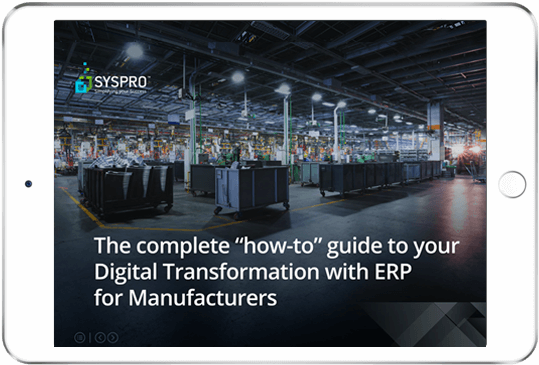The current economic climate is forcing businesses to think on their feet. Besides the requirement to respond to the needs of the pandemic, manufacturers and distributors have also needed to rethink business models to ensure long-term resilience.
Here is a list of learnings for manufacturers and distributors as we enter the era of invigoration:
Revelation number 1: The shift away from centralization
Traditional business models have mostly been defined by the gathering of the white-collar workforce within a centralized, communal office. These central work ‘hubs’ have led to the rise of urbanization. It came as no surprise that highly urbanized towns and cities were the hardest hit by the pandemic and became the epicenters of the disease.
As an immediate response, workforces were ordered to work from home and people soon realized that the remote workforce could remain just as effective and possibly even more productive than ever before.
With the ability for workforces to work anytime and from anywhere, the world may soon see the shift away from centralization. Companies will effectively operate from multiple locations and traditional urban planning will be significantly altered.
Revelation number 2: Adapting to consumer needs
History tends to repeat itself. While no one can accurately predict the long-term impact of the pandemic, some are looking to the past, and major world crises such as the Great Depression and World War II, to understand what may await us.
Between October 1929 and 1933, the Great Depression resulted in the unemployment of 15 million Americans. As a result, the country experienced the largest fall in total real consumer spending to date.
World War II also had an effect on consumer habits. Throughout these developments, the world of retail, manufacturing and even distribution needed to reactively adapt to suit the needs of the end consumer. The T-bone steak was replaced by the meager tin of spam, and consumers felt a sense of deprivation.
Today’s pandemic may also result in the rationalization of choice where consumers will make purchase decisions based on a need-basis and not a desire-basis. For now, manufacturers may need to move away from customized services and offer far fewer choices to achieve higher production volumes to optimize costs.
Revelation number 3: The increased embracing of automation and robotics
As a large portion of the world’s population entered lockdown, many manufacturers had no other choice but to down tools. This highlighted the importance of increased automation and the need for less reliance on human interaction and material handling.
The rise of the age of automation is inevitable but sustaining industry jobs is still a factor for consideration, with manual jobs making up half of the manufacturing workforce. According to the World Economic Forum, despite the large number of jobs being at risk through automation, job losses may not be as severe as first thought by manufacturers. The key to balance lies in upskilling the workforce in preparation for the future.
In order to thrive, the industry needs to jointly tackle the digital transformation challenge to reap the benefits of rapid innovation, shorter time to market, and business continuity. The good news is that you can use ERP to support your overall digital strategy. The key is to ensure that it is future-fit; that it has the capacity to act as the heart of your organization; and that it can provide you with the critical information you will need during the transformation process.
Revelation number 4: Re-evaluating the supply chain
Over the last few months, the supply chain has experienced a number of short-term challenges. For instance, there has been an increase of Import/Export restrictions as well as the closing of distribution channels such as ports. This has particularly impacted global suppliers such as China.
As a result, the linear supply-chain is changing to an expanded network of stakeholders. Manufacturers are actively seeking ways to diversify their supply chains and reduce their dependency on any single country or supplier.
A trend that may arise is on-shoring, or the “bringing home” of offshore manufacturing. It may create a stronger localized supply chain but will most likely increase manufacturing costs, and ultimately create higher prices for consumers, but it brings with it a number of material benefits. By re-establishing local manufacturers and bringing these smaller local businesses into your supply chain, you will be helping to bring much needed financial relief to your regional and national economy, increase tax revenues and boost the job market.
Here, technology such as ERP is playing a key role in creating visibility of local suppliers and the applications of different procurement practices and policies.
Revelation number 5: The opportunity for re-invention
Manufacturers have traditionally been asset-intensive for the likelihood of return. However, during the pandemic, we saw the rise of additive manufacturing. Across the world, hundreds of 3D printer manufacturers rose to the occasion by printing much-needed ventilators, personal protection equipment, and masks. Moving forward, many manufacturers may adopt additive manufacturing or on-demand manufacturing as a whole new way of operating.
Technology such as ERP can support manufacturers to make these pivots by providing the systems and platforms that resolve the biggest areas of impact – remote workforce enablement, implementation and automation of business systems to handle procurement and sourcing policy changes, distribution and lead time planning; and analytics providing data real-time to support improved decision-making. While there has been downtime, manufacturers have the opportunity now to make a change to improve operational efficiency and thrive now and into the future.
In these current times and the revelations above, equip your business today with the latest technologies and let SYSPRO help you adapt to the new normal.
Download the complete guide on “How to Digitally Transform with SYSPRO ERP”.









